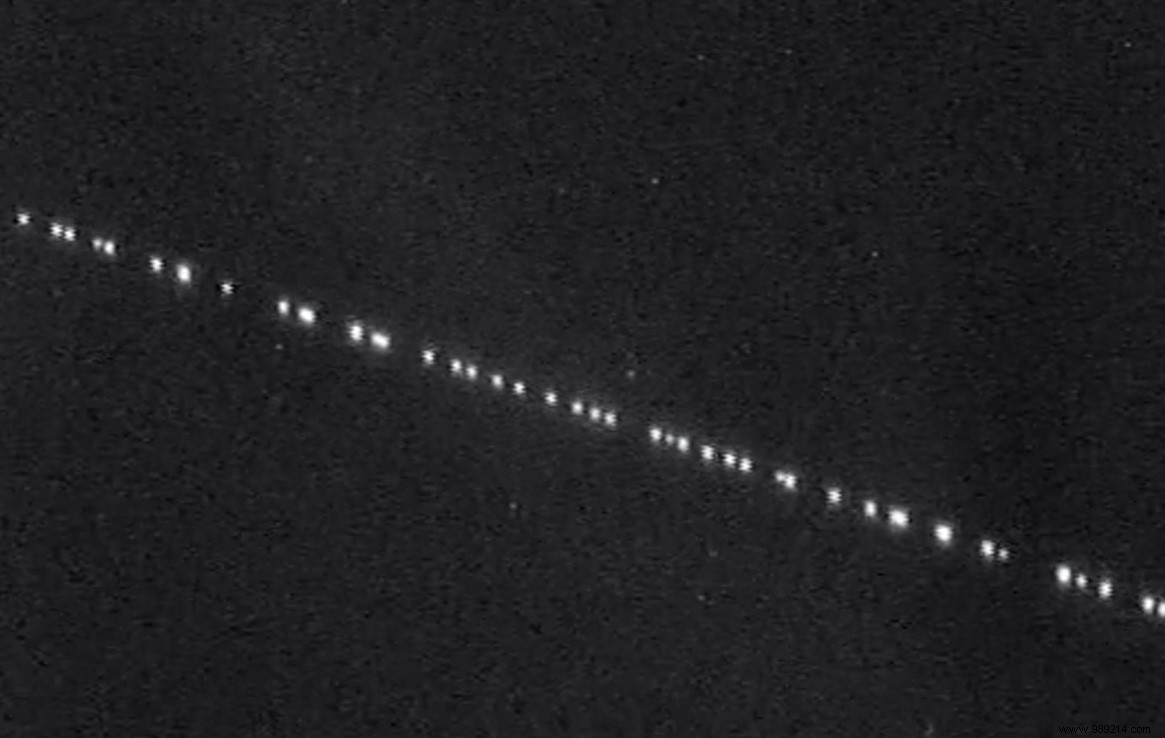Astronomers are proposing a new tool dubbed "SatHub" to deal with the growing threat of mega-satellite constellations that could interfere with astronomical observations.
Constellations of satellites are not new, but they have proliferated in recent years thanks to increasingly easy access to space. The most cited remains that of SpaceX, named Starlink, which currently has around 1,630 operational satellites out of the 12,000 planned in its constellation. However, SpaceX is not the only one involved. Indeed, Amazon is also in on the action with its Kuiper project, as is OneWeb, which was recently saved from bankruptcy. A few weeks ago, the Chinese government also announced the creation of a group dedicated to the development and operation of constellations totaling nearly 13,000 broadband satellites.
These new constellations aimed at providing broadband Internet access could nevertheless fundamentally change the way astronomers study the night sky. These satellites can indeed be millions of times brighter than the faintest objects studied by astronomers. However, these searches generally require several hours of exposure time under an immaculate dark sky. Point your instrument in the wrong place at the wrong time, and you can start all over again.
Very soon, astronomers from all over the world came together in SATCON (SATellites CONstellation) workshops with the aim of finding solutions to coexist with these constellations . To that end, SATCON1 attendees last year came up with several recommendations. These included limiting the altitudes of satellites in low earth orbit to (less than 600 kilometers to be less intrusive), reducing the brightness of the satellites, developing image processing software to minimize satellite tracks and sharing orbital information so that astronomers can anticipate.
On the first two points, progress has been made, in particular with SpaceX which offers "sunshades" aimed at reducing solar reflection on the bodies of satellites.
As part of the 2021 workshop (SATCON2) which ended on July 16, in which more than 350 astronomers, satellite operators and space policy specialists participated, researchers focused more on the last two points. “We need a major software development effort “, said Jonathan McDowell, astronomer at the Harvard-Smithsonian Center for Astrophysics.

From this desire was born a tool project called SatHub which, concretely, would aim to centralize satellite orbital data, according to Spacenews. In this way, astronomers with access to the software could organize their observations active. SatHub would also offer specialized software capable of correcting affected observations by such passages.
“The idea here is to have a one-stop-shop for all your different needs regarding Low Earth Orbit satellite constellation observations “said Meredith Rawls of the University of Washington. “We would really like to get ahead and avoid reinventing the wheel by having a lot of isolated groups to solve the problem “.
SatHub is still in its formative stages. "It will take some time to make this tool a reality “, Rawls said. A precursor effort, called Trailblazer, could be ready later this year. Astronomers are also studying funding models with the aim of being able to develop it. Ideally, companies that send satellites into space should invest money.
Nominations must be submitted to the International Astronomical Union by September 10 and deliberations will likely continue at least until the end of the year.
Finally, the researchers also urged countries that are responsible for their launch entities under the 1967 United Nations Outer Space Treaty recognized in frameworks of international space law to grant licenses to satellite operators only after the environmental impact of satellites has been assessed and minimized.